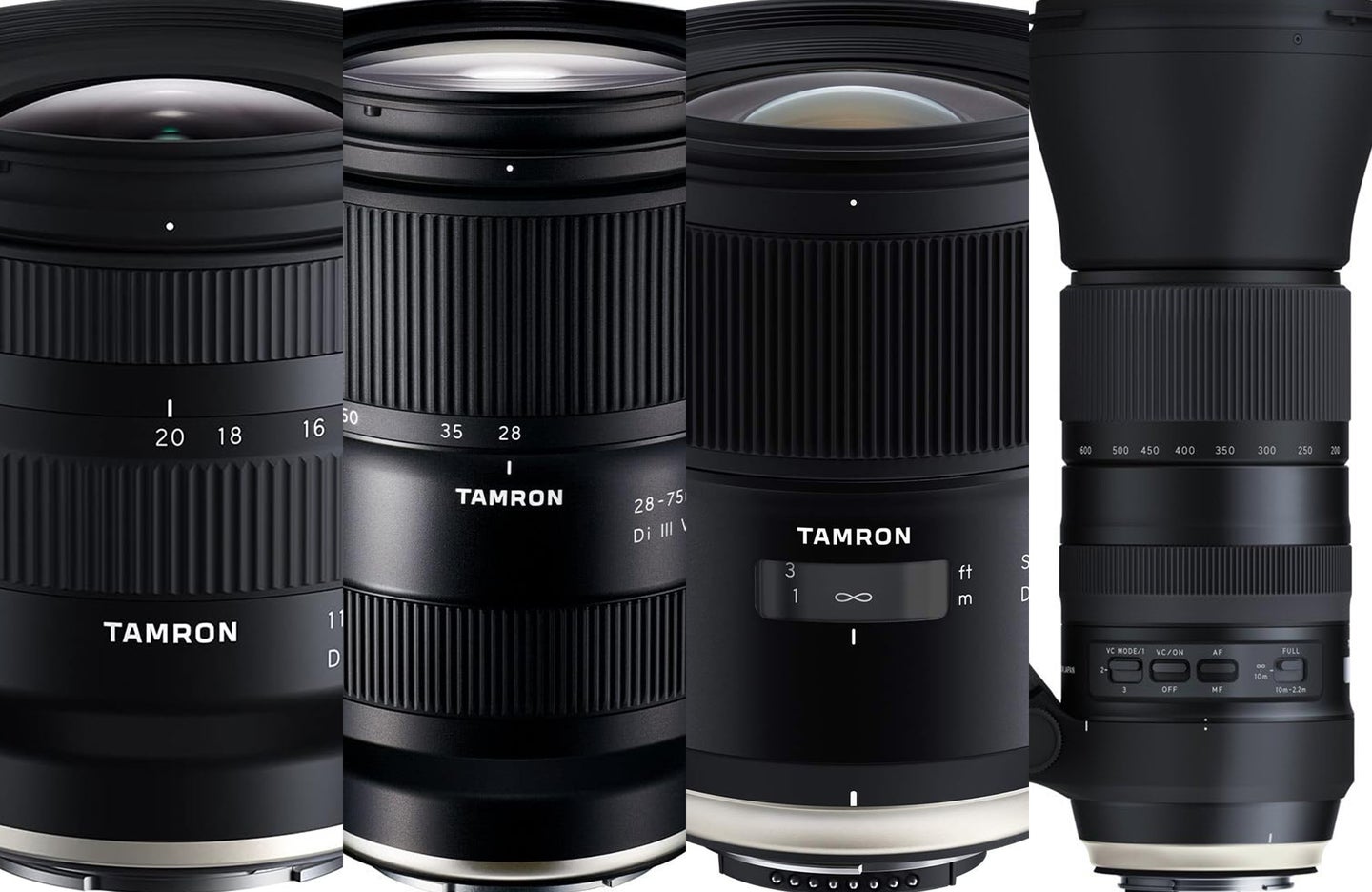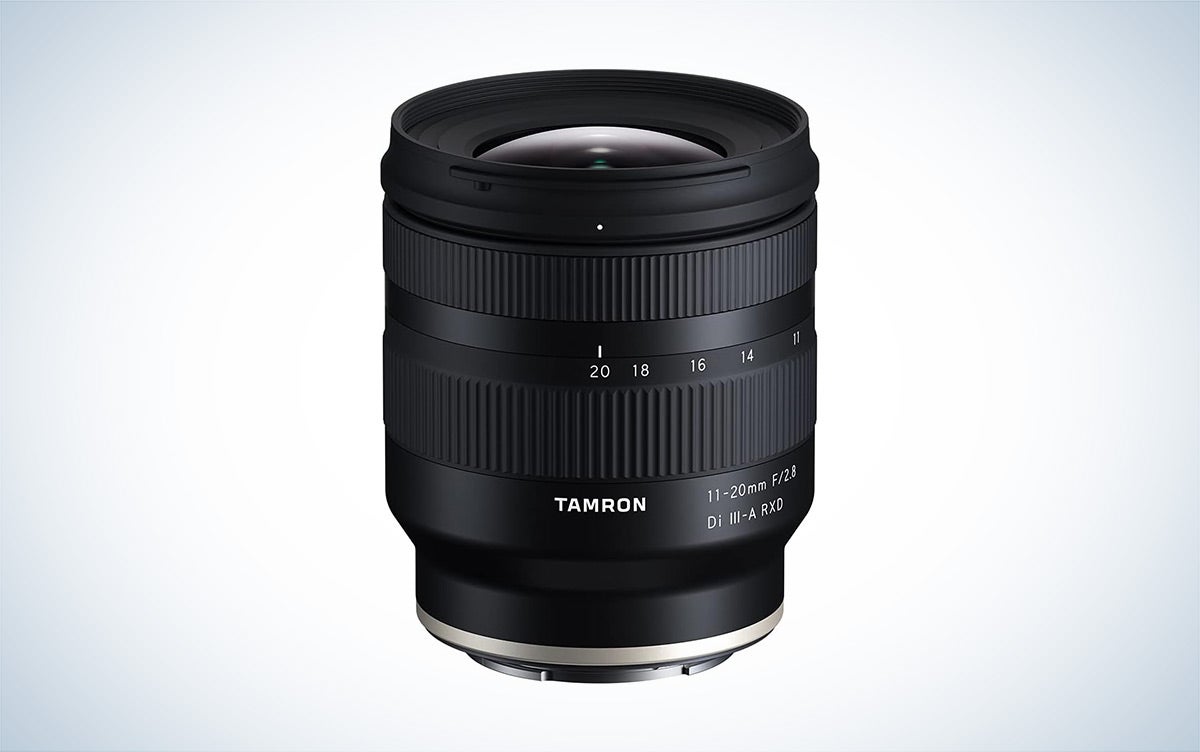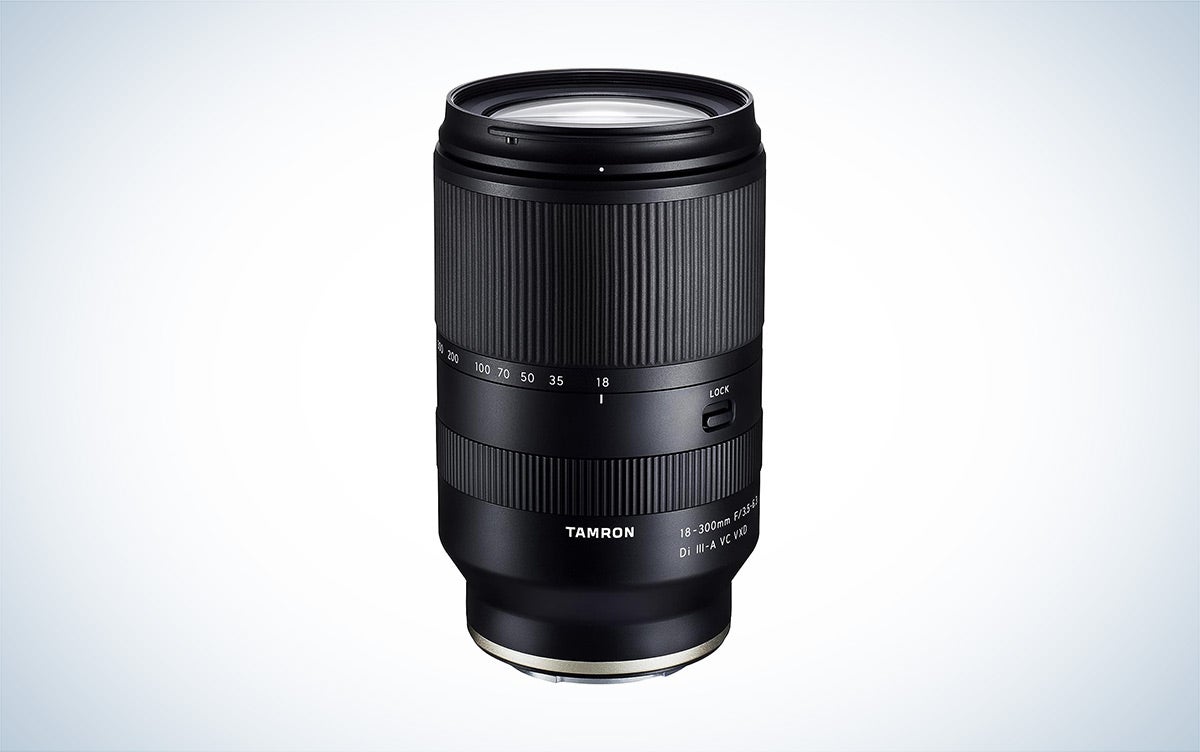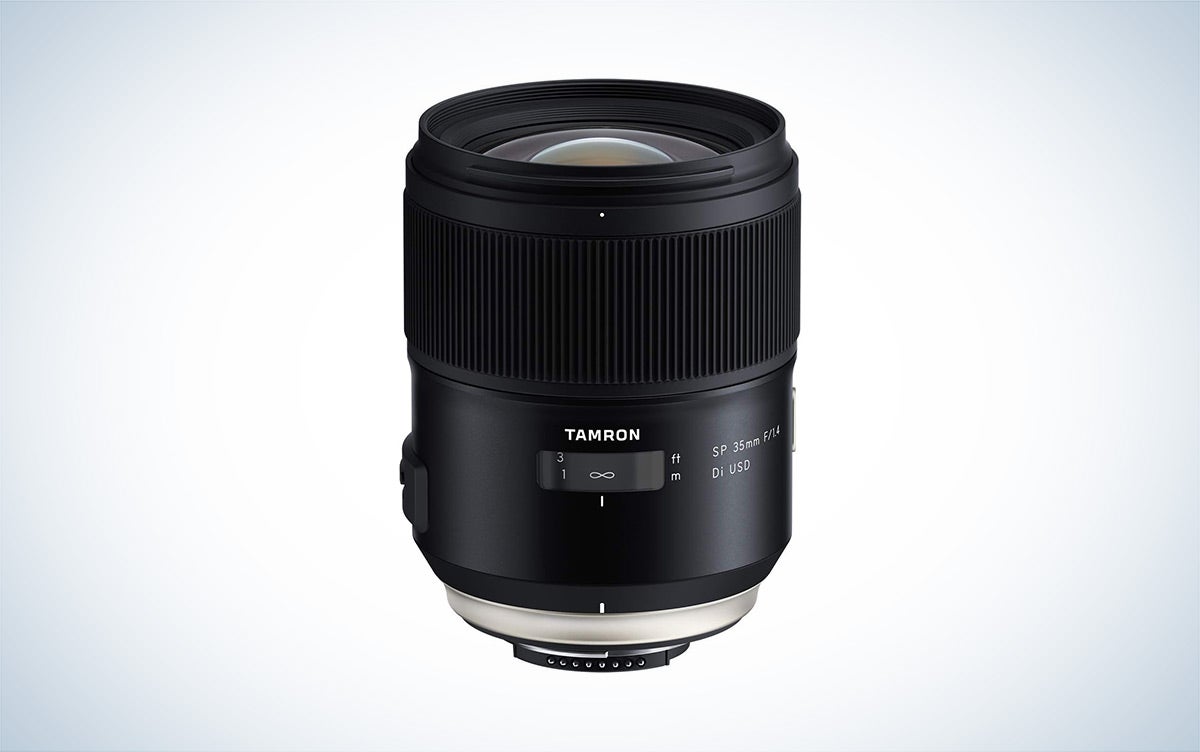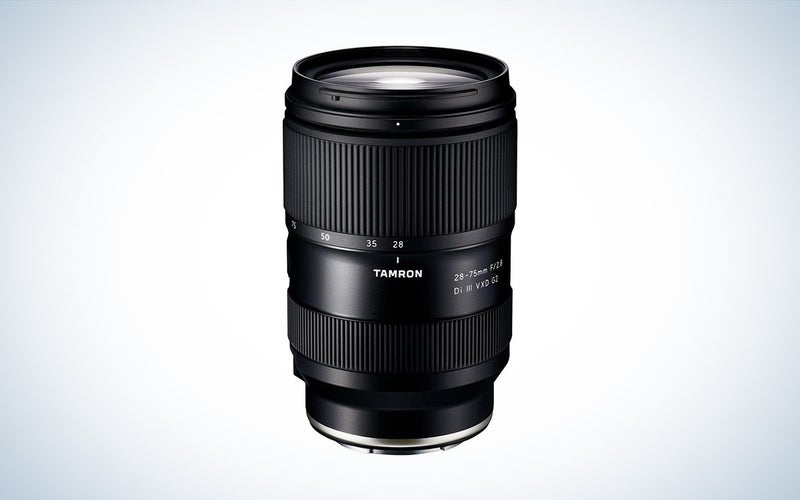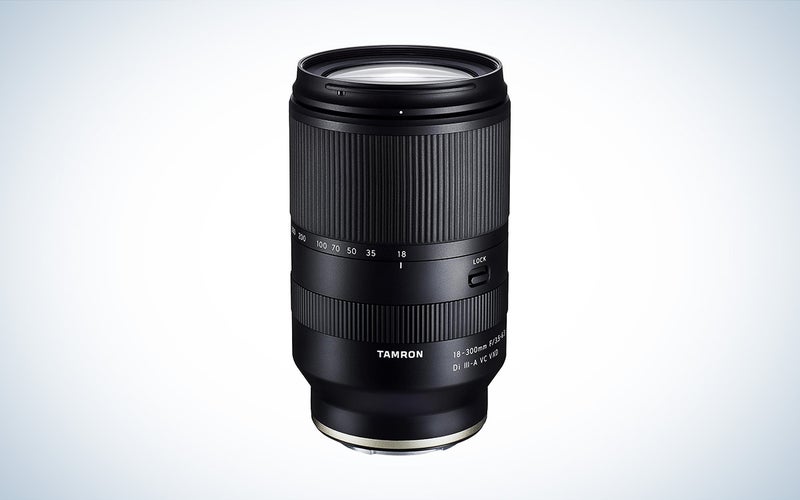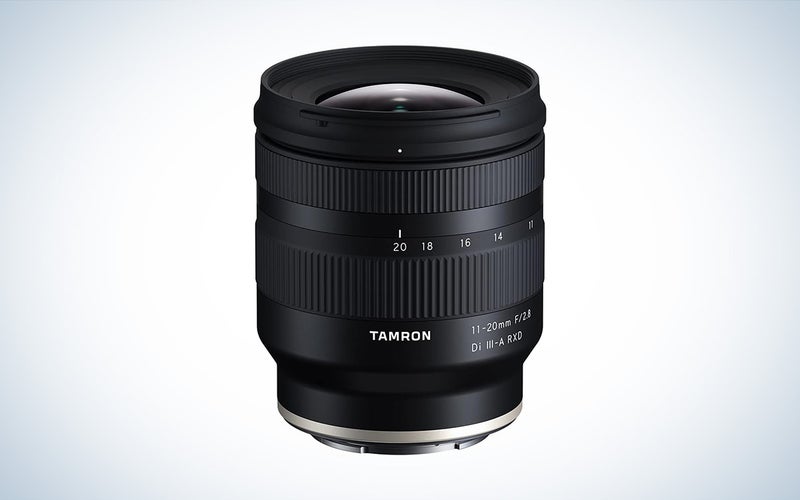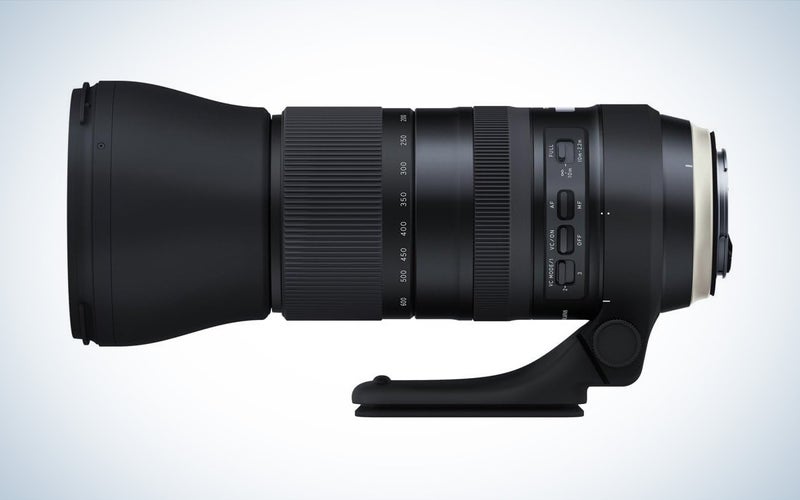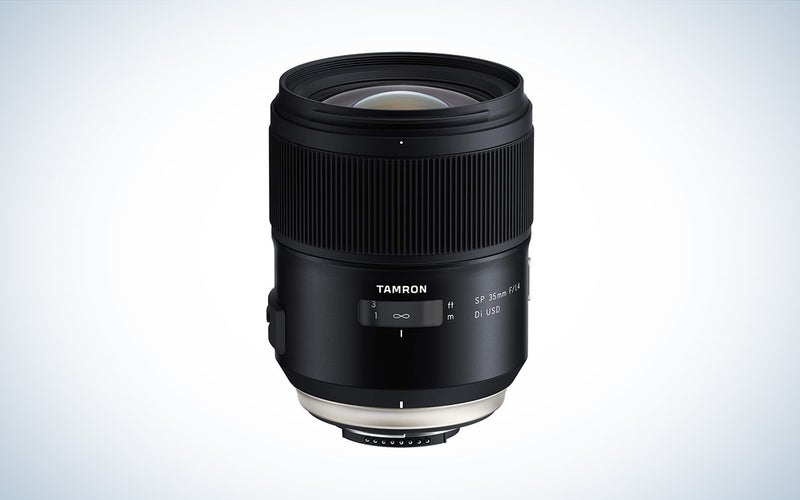We may earn revenue from the products available on this page and participate in affiliate programs. Learn more ›
Tamron lenses have been excellent third-party options for photographers for decades. The brand currently manufactures a wide variety of zooms and primes for Sony, Fujifilm, Nikon, and Canon camera systems. Many photographers opt to use lenses from a third-party manufacturer (rather than the camera manufacturer) as a cost-effective way to save money while building out their camera kit. In this guide, we will explore some of the best Tamron lenses currently on the market to help you select the best one for your needs.
- Best overall: Tamron 28-75mm F/2.8 Di III VXD G2
- Best all-in-one: Tamron 18-300mm F/3.5-6.3 Di III-A VC VXD
- Best ultra-wide: Tamron 11-20MM F/2.8 DI III-A RXD
- Best for wildlife: Tamron SP 150-600mm F/5-6.3 Di VC USD G2
- Best prime: Tamron SP 35mm F/1.4 Di USD
How we chose the best Tamron lenses
When selecting the products that appear in this buying guide, it was important to consider choices that fit a variety of budgets and shooting styles. Tamron currently makes lenses that are compatible with Fujifilm, Sony, Canon, and Nikon cameras, and it was important to include options that covered all of these systems.
Rather than categorizing our top picks by the cameras that they were compatible with, we chose to select the best from each of the lens styles that Tamron offers: All-on-one, standard zoom, wide-angle zoom, ultra-telephoto zoom, and prime. In making our selections, we considered features such as image quality, image stabilization, aperture range, size, and weight.
The best Tamron lenses: Reviews & recommendations
Tamron currently offers lenses that are compatible with Sony, Fujifilm X, Canon EF-mount, and Nikon F and Z-mount cameras. The lenses that appear in this buying guide specify which mounts they are currently available in so that you can select an option that works with your camera. While these lenses lack some of the high-end features that are found in first-party lenses, they still offer excellent image quality and are a great choice for budget-conscious photographers.
Best overall: Tamron 28-75mm F/2.8 Di III VXD G2
Tamron
Specs
- Lens mount: Sony E, full-frame
- Aperture range: f/2.8 – f/22
- Image stabilization: No
- Filter size: 67mm
- Minimum focus distance: 7.1 inches
- Weight: 1.2 pounds
- Dimensions: 3 x 4.6 inches
Pros
- Fast aperture
- Moisture resistant
- Faster focus motor
- USB port for firmware updates
Cons
- Only available for Sony cameras
- Not as wide as most standard zoom lenses
A follow-up to Tamron’s well-loved 28-75mm F2.8 Di III RXD, the G2 features a faster linear focus motor and a more pleasing bokeh when shooting wide. The inclusion of a USB port on the barrel makes it easy for photographers to update the firmware as it becomes available.
The lens is made up of 17 elements in 15 groups, including a low dispersion and a glass-molded aspherical element. It features a standard 67mm filter, which other lenses in the series also share, making it more affordable to invest in filters. It also offers a moisture-resistant build to protect it from the elements.
This particular lens is only available for Sony cameras but will work with both full-frame and APS-C models. Although it lacks the 24mm field of view available on most standard zooms, its fast aperture and fast focus capabilities make it an extremely appealing choice for budget-conscious Sony shooters.
Best all-in-one: Tamron 18-300mm F/3.5-6.3 Di III-A VC VXD
Tamron
Specs
- Lens mount: Fujifilm X or Sony E, APS-C
- Aperture range: f/3.5-6.3 to f/22-40
- Image stabilization: Yes
- Filter size: 67mm
- Minimum focus distance: 5.9 inches
- Weight: 1.4 pounds
- Dimensions: Fujifilm: 3 x 5 inches Sony: 3 x 4.9 inches
Pros
- Impressive field of zoom coverage
- Quick and quiet auto-focus
- Moisture-resistant build
- Features optical stabilization
Cons
- Not great in low light
Tamron’s 18-300mm F/3.5-6.3 Di III-A VC VXD is one of the best all-in-one lenses currently on the market. It is a great choice for photographers who want a variety of focal lengths without carrying around a ton of lenses. This particular model is made for Fujifilm and Sony mirrorless APS-C cameras. Its impressive zoom range covers an equivalent focal length range of 27 to 450mm.
This all-in-one can focus as close as 5.9 inches and offers a 1:2 maximum magnification ratio. That makes it a great tool for macro photography, adding to its versatility. It is also built to withstand your adventures. The plastic lens barrel offers a moisture-resistant build and an anti-smudge fluorine coating on the front of the lens, which will help keep it clear of fingerprints. Despite the wide zoom range, it only weighs 1.4 pounds, making it a surprisingly compact lens for what it offers.
The impressive zoom capabilities of this lens do mean you are sacrificing a fast aperture. The minimum aperture of f/3.5-6.3 doesn’t make this an ideal choice for shooting late at night. But if you are primarily a daytime shooter or using artificial lighting, this is an excellent budget-friendly all-in-one zoom.
Best ultra-wide: Tamron 11-20MM F/2.8 DI III-A RXD
Tamron
Specs
- Lens mount: Fujifilm X or Sony E, APS-C
- Aperture range: f/2.8 – f/16
- Image stabilization: No
- Filter size: 67mm
- Minimum focus distance: 5.9 inches
- Weight: 11.8 ounces
- Dimensions: 2.9 x 3.4 inches
Pros
- Super wide field of view
- Splash and dust-resistant
- Fast aperture
- Quick and quiet autofocus
Cons
- No stabilization
The Tamron 11-20mm F/2.8 Di III-A RXD offers a wide field of view in a surprisingly small package. Tamron designed the lens for Sony and Fujifilm APS-C mirrorless cameras, and it provides a full-frame equivalent focal length of 16.5 to 30mm. Although you can technically mount this to a full-frame Sony camera, because it was designed to be used with APS-C cameras, it won’t cover a full-frame sensor and will produce a black ring around your image. If you are an APS-C shooter and looking for that super wide field of view, this lens is a winner.
The lens is constructed of 12 elements in 10 groups, including special elements that reduce chromatic aberrations—a common issue when shooting with ultra-wide lenses. Its autofocus is quick and quiet, although this lens does have some issues with focus breathing when used for shooting video. It also happens to offer better weather protection and brighter optics than the comparable lenses made by Sony and Fujifilm. It does lack any stabilization, but that’s typical of an ultra-wide-angle zoom lens.
Best for wildlife: Tamron SP 150-600mm F/5-6.3 Di VC USD G2
Tamron
Specs
- Lens mount: Canon EF or Nikon F, full-frame
- Aperture range: f/5-6.3 to f/32-40
- Image stabilization: Yes, 4.5 stops
- Filter size: 95mm
- Minimum focus distance: 7.22 feet
- Weight: Canon: 4.42 pounds, Nikon: 4.38 pounds
- Dimensions: Canon: 4.27 x 10.24-13.33 inches, Nikon: 4.27 x 10.15-13.25 inches
Pros
- Impressive stabilization
- Lockable zoom controls
- Weather sealed build
- Quick autofocus
- Integrated Arca-Swiss quick-release system
Cons
- Unsatisfactory edge performance at extreme ends
This ultra-telephoto zoom is designed with wildlife and sports shooters in mind. Although this particular model is over five years old now, it remains one of Tamron’s most capable telephoto zooms. It features 21 elements in 13 groups and includes antireflection coatings to remove ghosting and flare from reflected light.
The Tamron 150-600mm features an ultrasonic silent drive for autofocus that is both quick and quiet, plus three levels of vibration control. The rotating collar and Acra-Swiss quick-release system make it easy to mount this massive lens to a tripod or monopod—which is the best way to use such a large telephoto lens. Unfortunately, the edge performance is unsatisfactory when the lens is used at its widest or tightest focal lengths. But it remains a solidly performing piece of glass at all other focal lengths.
Best prime: Tamron SP 35mm F/1.4 Di USD
Tamron
Specs
- Lens mount: Canon EF or Nikon F, full-frame
- Aperture range: f/1.4 – f/16
- Image stabilization: No
- Filter size: 72mm
- Minimum focus distance: 11.81 inches
- Weight: Canon: 1.79 pounds, Nikon: 1.78 pounds
- Dimensions: Canon: 3.19 x 4.13 inches, Nikon: 3.19 x 4.03 inches
Pros
- Super fast aperture
- Moisture resistant
- Classic 35mm focal length
- Quick and quiet autofocus
Cons
- No image stabilization
A super-fast prime lens is a tool that every photographer should have in their kit. Opting for one from a third-party lens maker is a great way to save as you build out your gear collection. The Tamron SP 35mm is one of our favorite third-party primes thanks to its exceptional image quality and affordable price. The lens features 14 elements in 10 groups, which include four low-dispersion elements and three glass-molded aspherical elements.
The fast aperture of f/1.4 makes for dreamy, beautiful bokeh when it’s used at its widest apertures. It features an ultrasonic silent drive motor for quick and quiet autofocus and a moisture-resistant construction. The Tamon SP 35mm is an excellent lens that doesn’t compromise on image quality while remaining a fraction of the price of first-party competitors.
What to consider when shopping for the best Tamron lenses
Camera system
The number one thing to consider before buying a Tamron lens is if it will be compatible with your camera system. Tamron lenses are currently available for Sony E-mount, Fujifilm X-mount, Canon EF-mount (DSLRs), Nikon F-mount (DSLRs), and Nikon Z-mount mirrorless cameras. Unfortunately, Canon mirrorless shooters don’t have the option of using Tamron lenses without purchasing a separate adapter, as Tamron has not created any lens for Canon R-mount. Also, Tamron only recently began releasing lenses for Nikon mirrorless, so there are very limited options for Z-mount thus far.
It is a frustrating moment to receive your lens in the mail only to realize that it won’t work with your camera. So, before you buy a Tamron lens, it is essential that you make sure to check that you’ve selected the correct lens mount that will work with your particular camera system.
APS-C or full-frame
Tamron makes a range of lenses for both APS-C—also called crop sensor—and full-frame cameras. You can use full-frame lenses on APS-C cameras with no issues. However, an APS-C lens on a full-frame camera won’t cover the entire sensor, so you’ll be left with a black frame around your images. You can always crop this out (some cameras allow you to do so in-camera), but you won’t be able to take advantage of the full image area of your full-frame camera.
If you use a full-frame camera, we’d highly suggest sticking with a lens that Tamron specifically designed for full-frame sensors. If you currently use a crop sensor camera but think you may upgrade in the future, it may be a good idea to stick with full-frame lenses as well. If you simply want affordable and compact lenses for your APS-C camera, you’re best bet is to stick with APS-C lenses.
Prime or zoom
Tamron offers an impressive line-up of both prime and zoom lenses, and if you are new to photography, it can be overwhelming of where to start. Prime lenses have fixed focal lengths —meaning you will need to zoom with your feet. They typically have much faster apertures than a zoom lens, offer a higher level of quality, and are more compact. As a result, they are excellent tools for portraiture, photojournalism, and street photography.
A zoom lens allows you to zoom in on your subject while standing in one place. The downside is that generally speaking, a zoom lens won’t have as fast of an aperture as a prime. And, many Tamron lenses (and budget lenses in general) have a variable maximum aperture, meaning you lose stops of aperture as you zoom in. Zoom lenses are great tools for photojournalists and are often found in the bags of wedding and event photographers, sports shooters, and nature photographers.
Ultimately, you want a mixture of both types of lenses in your kit, and opting to use third-party lenses with your camera body can be a great way to build without spending as much money.
Budget
Although Tamron lenses are typically less expensive than the lenses made by first-party manufacturers, prices on certain lenses can start to creep up. Before purchasing a Tamron lens, be realistic about your budget. Although the pricey ultra-telephoto lens might be fun, for what you are going to be shooting, a lower-cost all-in-one zoom might be a better long-term budget-friendly choice.
FAQs
Q: Are Tamron lenses weather-sealed?
Like any lens manufacturer, different Tamron lenses are designed with different levels of weather resistance. The Tamron lenses in this buying guide typically feature some level of protection from the elements, but it varies from lens to lens. A lens that is listed as splash-resistant or moisture-resistant will offer less protection against a lens that is weather-sealed. Higher-end lenses like the Tamron 150-600 G2 are more likely to offer full-weather sealing.
Q: Are Tamron or Sigma lenses better?
Tamron and Sigma are two of the leading manufacturers of third-party lenses, both offering high-quality yet affordable alternatives to photographers. Both companies make a wide variety of lenses, from affordable and compact options to bulkier but higher-end glass. Ultimately, what brand is better depends a lot on what camera system you are using and what types of lenses you are looking for.
Q: Are Tamron lenses compatible with the Canon or Nikon cameras?
Tamron does offer lenses that are compatible with Canon and Nikon cameras. That said, thus far, Tamron has not released any lenses for Canon R-mount mirrorless cameras. It does, however, have a wide selection of lenses for Canon EF-mount (DSLR). Similarly, there are plenty of options for Nikon DSLRs (F-mount), but only two—at the time of writing—for Nikon mirrorless (Z-mount). Pay close attention when ordering to make sure that the make and model that you’ve selected is the correct mount style for your specific camera body.
Final thoughts on the best Tamron lenses
- Best overall: Tamron 28-75mm F/2.8 Di III VXD G2
- Best all-in-one: Tamron 18-300mm F/3.5-6.3 Di III-A VC VXD
- Best ultra-wide: Tamron 11-20MM F/2.8 DI III-A RXD
- Best for wild-life: Tamron SP 150-600mm F/5-6.3 Di VC USD G2
- Best prime: Tamron SP 35mm F/1.4 Di USD
The best Tamron lens is largely dependent on what you are shooting, where you are shooting, and what camera system you are using. One of the biggest appeals of third-party lenses is that they offer a photographer a more affordable way to build out their camera kit. A third-party lens from Tamron will often be a fraction of the prices of comparable lenses that are made by the camera body manufacturer. Tamron offers a wide variety of zooms and primes for Sony, Fujifilm, Canon, and Nikon cameras—providing a choice for just about every kind of photographer.
Why trust us
PopPhoto has a long history of delivering the opinions of some of the sharpest and most prolific camera dorks the world has to offer. Since 1937, we’ve been reviewing cameras, providing wisdom from well-known photographers, and generally just nerding out about all that goes into making great pictures. Our current crop of writers and editors have decades of professional photography and camera writing experience among them. Collectively, we’ve probably shot with just about every camera and lens combo you can imagine—as well as some obscure stuff you may not even know about. Remember the Casio Tryx folding camera? PopPhoto does.
We also get that buying a camera is a big decision, which is why we’re dedicated to helping folks choose the right one (or, in our case “ones”) for their needs. Case in point: Handing over top dollar for an expensive rig may leave you unsatisfied if it doesn’t fit your preferred shooting style. Sure, a $6,000 sports-oriented DSLR can capture landscapes, but do you really need to do it at 30 frames-per-second? No, you don’t.
